- Home
- Libba Bray
The Best Science Fiction and Fantasy of the Year Volume 6
The Best Science Fiction and Fantasy of the Year Volume 6 Read online
THE BEST
SCIENCE FICTION
AND FANTASY
OF THE YEAR
VOLUME SIX
edited by Jonathan Strahan
The Best Science Fiction and Fantasy of the Year: Volume Six
© 2012 by Jonathan Strahan
This edition of The Best Science Fiction and Fantasy of the Year: Volume Six
© 2012 by Night Shade Books
Cover art © 2011 by Sparth
Cover design by Claudia Noble
Interior layout and design by Amy Popovich
Introduction, story notes, and arrangement
© 2012 by Jonathan Strahan.
Copyright © 2012 by Jonathan Strahan
“The Invasion of Venus” by Stephen Baxter. © Copyright 2011 Stephen Baxter. Originally published in Engineering Infinity. Reprinted by kind permission of the author.
“Underbridge” by Peter S. Beagle. © Copyright 2011 Avicenna Development Corporation. Originally published in Naked City. Reprinted by kind permission of the author.
“The Last Ride of the Glory Girls” by Libba Bray. (c) Copyright 2011 Martha E. Bray. Originally published in Steampunk! An Anthology of Fantastically Rich and Strange Stories. Reprinted by kind permission of the author.
“Brave Little Toaster” by Cory Doctorow. © Copyright 2011 Cor-Dor-Co, Ltd (UK). Some rights reserved under a Creative Commons Attribution-NonCommercial- ShareAlike 3.0 License. Originally published in TRSF: The Best New Science Fiction Inspired by Today’s Emerging Technologies. Reprinted by kind permission of the author.
“Relic” by Jeffrey Ford. © Copyright 2011 Jeffrey Ford. Originally published in The Thackery T. Lambshead Cabinet of Curiosities. Reprinted by kind permission of the author.
“Younger Women” by Karen Joy Fowler. © Copyright 2011 Karen Joy Fowler. Originally published in Subterranean, Summer 2011. Reprinted by kind permission of the author.
“The Case of Death and Honey” by Neil Gaiman. © Copyright 2011 Neil Gaiman. Originally published in A Study in Sherlock. Reprinted by kind permission of the author.
“Old Habits” by Nalo Hopkinson. © Copyright 2011 Nalo Hopkinson. Originally published in Eclipse Four. Reprinted by kind permission of the author.
“Steam Girl” by Dylan Horrocks. © Copyright 2011 Dylan Horrocks. Originally published in Steampunk! An Anthology of Fantastically Rich and Strange Stories. Reprinted by kind permission of the author.
“The Man Who Bridged the Mist” by Kij Johnson. © Copyright 2011 Kij Johnson. Originally published in Asimov’s Science Fiction, October-November 2011. Reprinted by kind permission of the author.
“Tidal Forces” by Caitlín R Kiernan. © Copyright 2011 Caitlín R Kiernan. Originally published in Eclipse Four. Reprinted by kind permission of the author.
“Goodnight Moons” by Ellen Klages. © Copyright 2011 Ellen Klages. Originally published in Life on Mars: Tales from the New Frontier. Reprinted by kind permission of the author.
“Catastrophic Disruption of the Head” by Margo Lanagan. © Copyright 2011 Margo Lanagan. Originally published in The Wilful Eye: Tales from the Tower Vol. 1. Reprinted by kind permission of the author.
“Valley of the Girls” by Kelly Link. © Copyright 2011 Kelly Link. Originally published in Subterranean, Spring 2011. Reprinted by kind permission of the author.
“The Paper Menagerie” by Ken Liu. © Copyright 2011 Ken Liu. Originally published in The Magazine of Fantasy and Science Fiction, March/April 2011. Reprinted by kind permission of the author.
“The Choice” by Paul McAuley. © Copyright 2011 Paul McAuley. Originally published in Asimov’s Science Fiction, January 2011. Reprinted by kind permission of the author.
“Digging” by Ian McDonald. © Copyright 2011 Ian McDonald. Originally published in Life on Mars: Tales from the New Frontier. Reprinted by kind permission of the author.
“After the Apocalypse” by Maureen F. McHugh. © Copyright 2011 Maureen F. McHugh. Originally published in After the Apocalypse. Reprinted by kind permission of the author.
“The Book of Phoenix (Excerpted from The Great Book)” by Nnedi Okorafor. © Copyright 2011 Nnedi Okorafor. Originally published in Clarkesworld #54, March 2011. Reprinted by kind permission of the author.
“All That Touches The Air” by An Owomoyela. © Copyright 2011 An Owomoyela. Originally published in Lightspeed Magazine #11, April 2011. Reprinted by kind permission of the author.
“A Small Price to Pay for Birdsong” by K. J. Parker. © Copyright 2011 K. J. Parker. Originally published in Subterranean, Winter 2011. Reprinted by kind permission of the author.
“The Server and the Dragon” by Hannu Rajaniemi. © Copyright 2011 Hannu Rajaniemi. Originally published in Engineering Infinity. Reprinted by kind permission of the author.
“Woman Leaves Room” by Robert Reed. © Copyright 2011 Robert Reed. Originally published in Lightspeed Magazine #10, March 2011. Reprinted by kind permission of the author.
“The Corpse Painter’s Masterpiece” by M Rickert. © Copyright 2011 M Rickert. Originally published in The Magazine of Fantasy and Science Fiction, September/October 2011. Reprinted by kind permission of the author.
“What We Found” by Geoff Ryman. © Copyright 2011 Geoff Ryman. Originally published in The Magazine of Fantasy and Science Fiction, September/October 2011. Reprinted by kind permission of the author.
“Restoration” by Robert Shearman. © Copyright 2011 Robert Shearman. Originally published in Everyone’s Just So So Special. Reprinted by kind permission of the author.
“The Onset of a Paranormal Romance” by Bruce Sterling. © Copyright 2011 Bruce Sterling. Originally published in Flurb: A Webzine of Astonishing Tales, Issue 12, Fall-Winter 2011. Reprinted by kind permission of the author.
“The Dala Horse” by Michael Swanwick. © Copyright 2011 Michael Swanwick. Originally published in Tor.com, July 2011. Reprinted by kind permission of the author.
“White Lines on a Green Field “ by Catherynne M. Valente. © Copyright 2011 Catherynne M. Valente. Originally published in Subterranean, Fall 2011. Reprinted by kind permission of the author.
“Malak” by Peter Watts. © Copyright 2011 Peter Watts. Originally published in Engineering Infinity. Reprinted by kind permission of the author.
“The Cartographer Wasps and the Anarchist Bees” by E. Lily Yu. © Copyright 2011 E. Lily Yu. Originally published in Clarkesworld #55, April 2011. Reprinted by kind permission of the author.
First Edition
ISBN: 978-1-59780-345-8
E-ISBN: 978-1-59780-346-5
Night Shade Books
www.nightshadebooks.com
Acknowledgements
This book has been a pleasure to work on, but it’s been done with help from a lot of people. First and foremost, I’d like to thank Jason Williams, Jeremy Lassen, and the redoubtable Ross E. Lockhart at Night Shade, who have been wonderful to work with over the years, and who make sure every volume is better than the one that came before it. Second, I’d like to thank everyone at Not if You Were the Last Short Story on Earth, who help keep me grounded and focussed in my reading during the year. Third, my thanks all of the book’s contributor’s, who helped me get this year’s book together at the last moment (with special thanks to Neil and Les). Fourth, a special thanks to Liza Groen Trombi and all of my friends and colleagues at Locus. And, finally, two very special sets of thanks. As always, I’d like to thank my
agent, the dapper and ever-reliable Howard Morhaim, whose annual parties are a highlight of the year. And finally, my extra, extra special thanks to my wife Marianne and my daughters Jessica and Sophie: every moment spent working on this book was stolen from them.
Introduction
Jonathan Strahan
2011 was a strange, interesting year that left me in little doubt that science fiction and fantasy short fiction, however you might define it, is in pretty good health. A flood of stories appeared in an enormous variety of venues, print and electronic, around the world during the year. In its annual year-in-review last year, trade magazine Locus reported that about 3,000 stories of genre interest had been published in 2010, and it continues to be my belief that underestimates the true number by as much a factor of five.
As always, there is always a great urge to look at the tiny selection of stories collected in these pages—just 31 of those thousands of stories—and look for trends and make prognostications about how the science fiction and fantasy field is developing. I’ve always been a little uncomfortable doing this, because my view of the field seems to steadfastly resist such efforts. Still, some trends are becoming clear and, despite what news from book and magazine publishing might suggest, the genre short story as fiction continues to appear to be in good health. There are two that I’d comment on here.
First, pleasingly, and importantly for the continuing health of the genre, science fiction and fantasy seems to be becoming more diverse. I find myself encountering more and more excellent work written by women and men who are not straight or white or Christian or just from the English-speaking publishing world. That increased diversity, which was clearly evident this year, leads to new and different stories being told, and that can only be a good thing.
Second, while 2011 continued to see genre boundaries blur and mix, something that has happened throughout the modern history of the field but which has seemed more prevalent in the last five years, I was pleased to see evidence that the SF story might be staking out some new ground for itself. I’ve been increasingly concerned about the market for science fiction short stories, so I’m encouraged to see SF magazine Lightspeed, which launched in 2010 have a strong first year, Solaris launch a new annual SF anthology series, Solaris Rising, and MIT’s Technology Review debut an annual SF anthology/magazine, trsf, all focussed on what my colleague and friend Gardner Dozois would call “pure quill SF”. Combined with the NASA/Tor announcement that they would be publishing a series of science fiction themed books as “NASA Inspired Works of Fiction”, and author Neal Stephenson’s efforts to highlight similar ground, there’s cause for real optimism that the ongoing discussion that is the SF field will continue into the future.
That said, it was a far from encouraging year in publishing. The major stories of 2010—the rise of e-books and the decline of print book publishing/bookselling—were the major stories of 2011. Possibly the most dramatic story was the closure and liquidation of the Borders chain of bookstores, which reduced the amount of shelf space devoted to selling books in the US by about 30%. This was underscored by reports that Barnes & Noble, the other major chain, was reducing its bookshelf space, and that Canadian book distributor H.B. Fenn had filed for bankruptcy, leaving many publishers with heavy losses. In Australia, the REDGroup collapsed, closing all of its Borders stores and a number of its Angus & Robertson stores. The most commonly reported culprit for these closures was the rise of e-books. While these reports don’t really bear up under close scrutiny, it’s undeniable that e-book sales are changing publishing irrevocably. E-reader and tablet sales boomed during 2011 like never before, with annual sales projected to hit 25-30 million units, three times the number sold in 2010. E-books sales rose dramatically throughout the year too, with the Association of American Publishers reporting that sales had grown by 1039% since 2007, and now represent 13.6% of adult fiction book sales in the US. A good example of this was George R. R. Martin’s September induction into the Kindle Million Club, selling a million ebooks for the device (his A Dance with Dragons reportedly sold 300,000 copies on its first day, and 50% of those sales were e-book). These sales undeniably meant bad news for print booksellers, and there’s a lot more uncertainty ahead, but even in the face of all of this change, it’s hard not to feel that readers will still find stories.
The magazine market was, if anything stranger. In April Locus classified just five print magazines as ‘professional’—Analog, Asimov’s, F&SF, Interzone, and Realms of Fantasy—and those magazines published just 38 issues between them. Where circulation figures were available, they showed a significant and continuing drop in sales. However, there is cause for optimism here too, with reports of steadily rising digital sales. Unsurprisingly, Realms of Fantasy, which opened and closed several times in recent years, suffered a 51% drop in sales between 2008 and 2010, and ultimately closed what must surely be a final time late in the year. Unlike their print counterparts, online magazines reported steadily growing readerships, with Hugo winner Clarkesworld reporting to Locus that it had about 21,000 readers per issue, Fantasy about 15,000, Lightspeed about 20,000, Apex around 12,000, and Tor.com around 300,000 per month (though this figure covered the whole site and not just fiction). Figures weren’t available for other major online magazines, Subterranean and Strange Horizons, but both reported healthy readerships. The only question remains how these fine magazines are converting their growing readerships into sustainable businesses. That they do so is, in my opinion, critical to the future of short fiction. I should also note that in August Marvin Kaye bought Weird Tales from Wildside Press, announcing he would edit the magazine himself. Weird Tales won a number of awards and great acclaim in recent years under the editorship of Ann VanderMeer, whose editorial voice will be sorely missed, while in October John Joseph Adams bought both Lightspeed and Fantasy magazines from Prime Books.
Last year I found most of the stories I liked in magazines, but noted that with the wide variety of venues producing excellent work no single source dominated. This year that trend towards diversity continued. About half of the stories collected here come from the pages or screens of magazines, a few from author collections, and the remainder from the pages of anthologies.
As I noted last year, we are still at a point in the digital era that we still find ourselves bound, it seems, to discuss whether magazines appear in print or online. This doesn’t seem a particularly useful distinction to me, given that at the end of the day a magazine is a magazine and an issue is an issue. That said, the majority of the stories from magazines that I liked in 2011 came from online sources. Last year Subterranean had a particularly strong year, and it dominated again in 2011. Editor Bill Schafer proved that he has a canny editorial eye, delivering a terrific mix of fantasy, oddball SF, and other stuff, including major stories by Karen Joy Fowler, Catherynne M. Valente, Kelly Link, K.J, Parker, and many more. The Gwenda Bond guest-edited YA issue was a highlight, and was uniformly strong. Subterranean was, on balance, in my opinion the best single source of top notch fiction in 2011. John Joseph Adam’s Lightspeed proved that it has quickly developed into a major market for SF, featuring excellent stories by old hands like Robert Reed and Nancy Kress, alongside newcomers like An Owomoyela, Ken Liu, and Genevieve Valentine. Tor.com was, again, slightly less impressive, but when it was good it was very, very good, and included a terrific story by Michael Swanwick, and very good stories by Charlie Jane Anders, Ken Macleod and others. Finally, Hugo Award winner Clarkesworld has clearly evolved into one of the major magazines in the field. This year it featured top-notch stories from Nnedi Okorafor, E.. Lily Yu, Nina Kiriki Hoffman, Gord Sellar and others.
Of the print magazines, Asimov’s Science Fiction Magazine against had the best year producing terrific work by established regulars like Paul McAuley, Kij Johnson, Robert Reed, and Michael Swanwick, alongside newer writers like Nancy Fulda and Ken Liu. Editor Sheila Williams doesn’t really get enough credit for the efforts she’s put in over recent years to broaden and r
e-define Asimov’s but it again showed this year. Gordon Van Gelder’s Fantasy & Science Fiction had another good year, with strong stories by M. Rickert, Ken Liu, and Geoff Ryman. It remains a reliable source of good fiction. I’m not quite sure how to classify MIT Press’s trsf. It’s an annual magazine, I think, but it may be classified in some places as an anthology. Regardless, it featured excellent SF from Cory Doctorow, Ken Macleod, Pat Cadigan, Gwyneth Jones, and Elizabeth Bear. I strongly recommend it, and look forward to future issues. There were many other print magazines published, but these were the ones that struck me as the best.
It seemed to me that 2011 a particularly good year for anthologies. I should offer the caveat here that I edited several anthologies that appeared during the year, so I offer without comment SF anthologies Life on Mars and Engineering Infinity, and mixed SF/F anthology Eclipse Four. All contain work I think deserves your attention. The best original anthology of the year was, without question, Gavin Grant and Kelly Link’s superb Steampunk! An Anthology of Fantastically Rich and Strange Stories. I have grave doubts about how it parses as steampunk, but it includes some of the very best stories of the year by Libba Bray, Dylan Horrocks, Kelly Link, M. T. Anderson, Christopher Rowe and others. There literally isn’t a bad story here and if you buy only one original anthology of the year, this should be it. Jack Dann and Nick Gevers’ Ghosts by Gaslight occupies similar territory, and if it’s not quite as strong, is still a very good book with strong stories by Paul Park, Theodora Goss, James Morrow, Garth Nix and others. I greatly enjoyed Holly Black and Ellen Kushner’s Welcome to Bordertown, a shared-world fantasy anthology with strong work from Kushner, Black, Catherynne M. Valente and others. Essential for readers who’ve been to Bordertown before and a great introduction for others. I don’t cover horror in this book, though I perhaps include a little too much dark fiction for the comfort of my colleague and dear friend Ellen Datlow. For this reason I’ll simply mention that Datlow had a banner year, editing Blood and Other Cravings, Teeth, Supernatural Noir and Naked City, all of which were excellent. And since I’m mentioning horror I should add that Stephen Jones’ A Book of Horrors is one of the landmark horror anthologies of recent years. Finally, Jeff VanderMeer and Ann VanderMeer’s The Thackery T. Lambshead Cabinet of Curiosities was, in my opinion, even better than their first Lambshead book, and featured great work by Jeffrey Ford, Garth Nix and others.

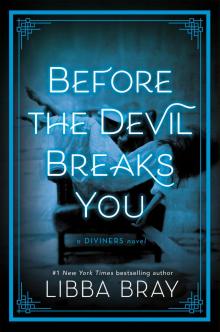 Before the Devil Breaks You
Before the Devil Breaks You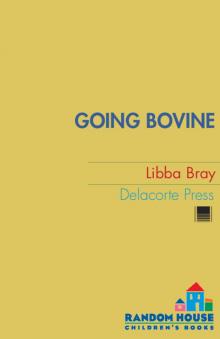 Going Bovine
Going Bovine A Great and Terrible Beauty
A Great and Terrible Beauty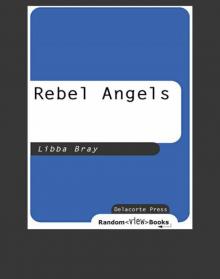 Rebel Angels
Rebel Angels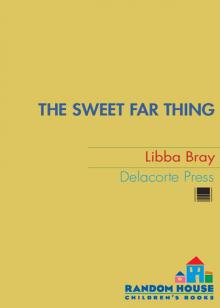 The Sweet Far Thing
The Sweet Far Thing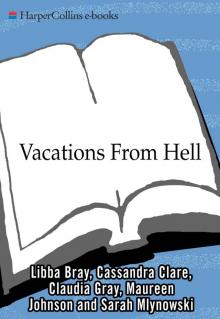 Vacations From Hell
Vacations From Hell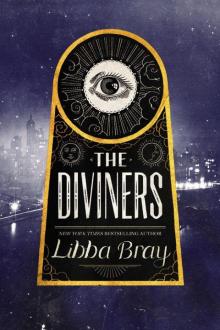 The Diviners
The Diviners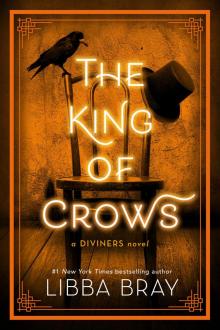 The King of Crows
The King of Crows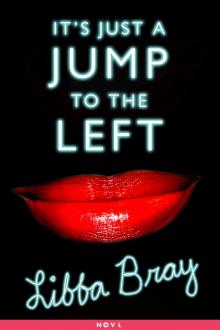 It's Just a Jump to the Left
It's Just a Jump to the Left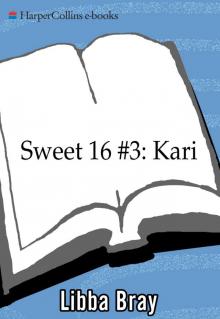 Kari
Kari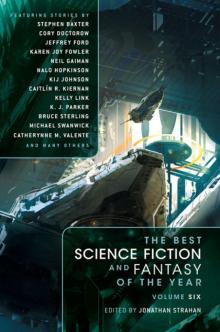 The Best Science Fiction and Fantasy of the Year Volume 6
The Best Science Fiction and Fantasy of the Year Volume 6